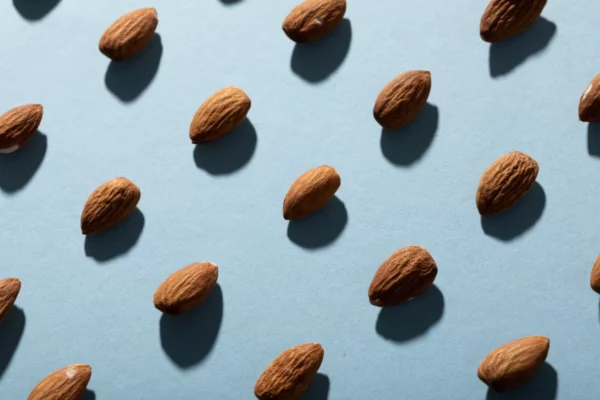Introduction
The teenage years are a whirlwind of growth, change, and discovery. As teens navigate academic pressures, social dynamics, and even emotional rollercoasters, there’s one aspect that often takes a backseat—nutrition. In the midst of all this chaos, fiber, a simple yet potent dietary component, can provide some surprising advantages. This blog post is a comprehensive guide to understanding how incorporating fiber can pave the way for digestive wellness, academic performance, and even psychological benefits.
What is Fiber, Anyway?
First, let’s break down what fiber actually is. Fiber is an indigestible carbohydrate found in plant foods. While it may sound less than appealing initially, its ‘indigestibility’ offers some unique health perks. Fiber comes in two primary forms:
- Soluble Fiber: This type dissolves in water, forming a gel-like substance that can assist in lowering cholesterol and regulating blood sugar levels. You’ll find soluble fiber in foods like oats, beans, lentils, and fruits like apples and oranges.
- Insoluble Fiber: This type doesn’t dissolve in water. It helps move waste through your digestive system, aiding in regularity and constipation prevention. Foods like whole grains, nuts, and many vegetables are rich in insoluble fiber.
Digestive Wellness for Teens
Bowel Regularity and Constipation
One of the immediate benefits of fiber is its role in promoting digestive wellness. Teenagers often indulge in erratic eating habits. Pizza, chips, and soda might be staples, but they lack the fiber necessary for a well-functioning digestive system. Insufficient fiber intake can lead to constipation and irregular bowel movements, common issues among teens.
The Gut-Brain Axis and Overall Health
Recent research has shed light on the ‘gut-brain axis,’ a term that explains the symbiotic relationship between gut health and brain function. Simply put, a healthy gut can lead to a healthy mind. For teenagers, this is crucial, considering the academic and social pressures they face daily. Fiber acts as a prebiotic, providing essential nourishment for beneficial gut bacteria, thus promoting a balanced gut microbiome.
The Role of Fiber in Weight Management
Teen years are often riddled with body image issues and the dangers of fluctuating weight. Obesity in teenagers can lead to both immediate and long-term health risks, including diabetes and cardiovascular issues. Fiber-rich foods tend to be more filling, enabling better control over appetite and portion sizes. Because these foods take longer to eat and digest, they can help prevent binge-eating episodes common among stressed or emotionally fraught teens.
Enhancing Academic Performance Through Fiber
Sustained Energy Levels
Highly processed, sugary foods may provide a quick energy boost but are often followed by a crash that can cause fatigue and reduced concentration. These energy spikes and subsequent lows can be particularly detrimental during school hours, impacting academic performance. Fiber-rich foods, in contrast, offer a slow, steady release of energy, allowing for better focus and longer-lasting stamina.
Cognitive Benefits
Remember the gut-brain axis we talked about earlier? There’s increasing evidence to suggest that a healthy gut contributes to enhanced cognitive functions, including focus, memory, and mental clarity. The fiber in fruits, vegetables, and whole grains can nourish gut flora, thus playing a vital role in cognitive health. This is incredibly beneficial for teens who are in a critical stage of brain development.
Cardiovascular Health and Teens
When we talk about heart health, teenagers are not the first demographic that comes to mind. However, dietary habits established during teenage years often carry into adulthood. Soluble fiber can help lower bad cholesterol levels (LDL), paving the way for better cardiovascular health both now and in the future.
Psychological Upsides of a High-Fiber Diet
Mood Regulation and Stress Management
The gut-brain axis doesn’t just stop at cognitive function; it extends to mood and emotional well-being. The healthy bacteria nourished by a fiber-rich diet can produce neurotransmitters that help regulate mood. For teenagers, this is a boon, given the frequent mood swings and stress they experience due to hormonal changes and external pressures.
Preventing Eating Disorders
The satiating nature of fiber-rich foods may contribute to a healthier relationship with food. Many teenagers, due to societal pressures, may fall victim to eating disorders like anorexia or binge-eating. A high-fiber diet can offer a natural way to control portion sizes and promote fullness, possibly serving as a preventative measure against these disorders.
Practical Tips for Boosting Fiber Intake
- Morning Kickstart: Choose whole-grain cereals or oatmeal for breakfast instead of sugary options.
- Smart Snacking: Opt for fruits, veggies, or a handful of nuts for a fiber-rich, satisfying snack.
- Meal Planning: Make sure to include a fiber source in every meal. Whether it’s a salad, a bean side dish, or whole-grain bread, fiber should be a staple.
- Educational Approach: Teach your teen how to read food labels. This simple skill can make a massive difference in their dietary choices.
Conclusion
Fiber is a multi-faceted nutrient offering a range of benefits crucial for the holistic development of teenagers. From digestive wellness to academic performance and emotional well-being, fiber is a powerhouse that’s often underestimated. As parents, educators, or even as teenagers yourselves, recognizing the potential benefits of fiber and implementing it in daily diets can bring about transformative health changes that last a lifetime. So why wait? Make fiber a non-negotiable part of your teenage diet today!









